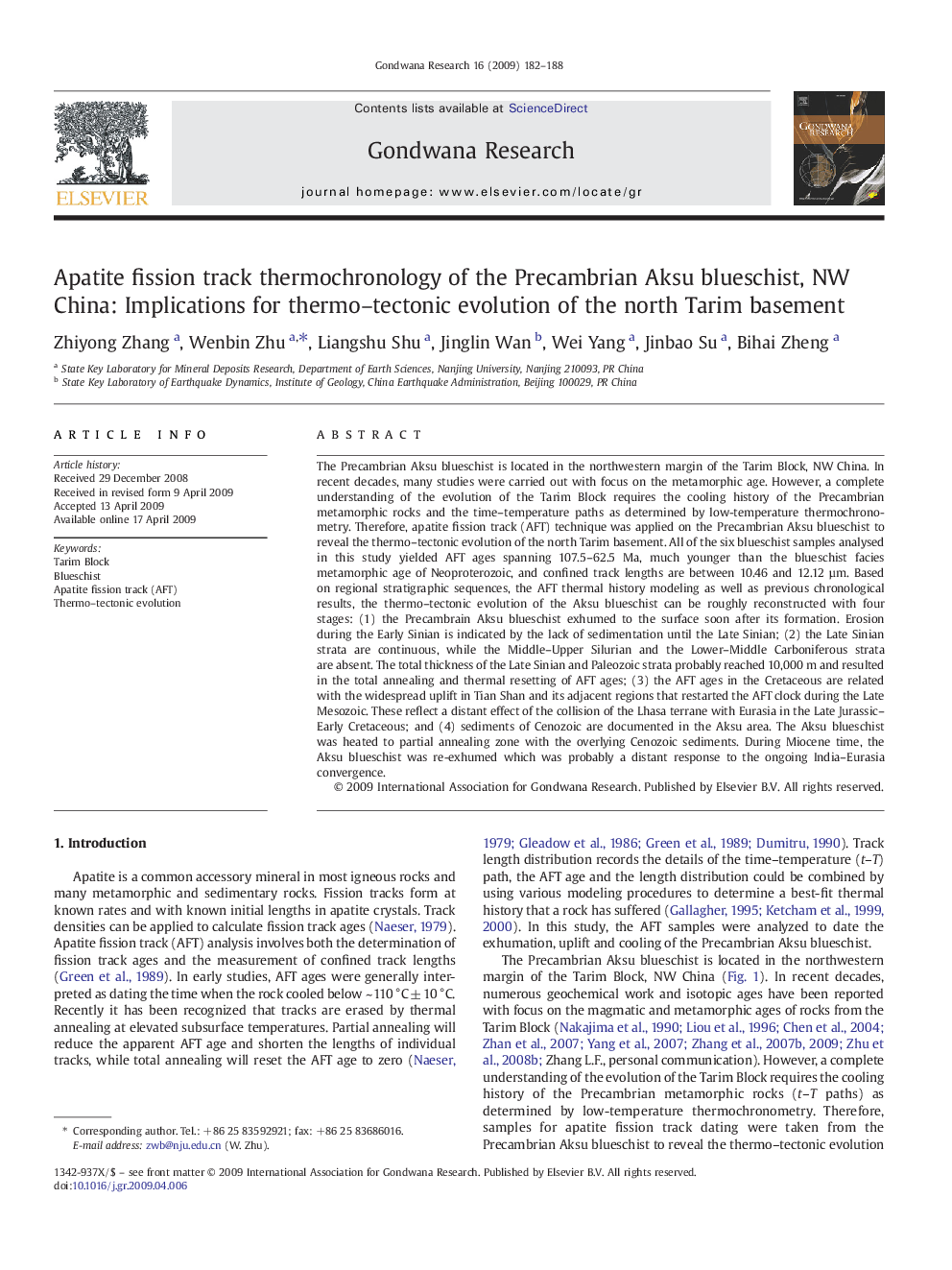| کد مقاله | کد نشریه | سال انتشار | مقاله انگلیسی | نسخه تمام متن |
|---|---|---|---|---|
| 4727479 | 1356380 | 2009 | 7 صفحه PDF | دانلود رایگان |

The Precambrian Aksu blueschist is located in the northwestern margin of the Tarim Block, NW China. In recent decades, many studies were carried out with focus on the metamorphic age. However, a complete understanding of the evolution of the Tarim Block requires the cooling history of the Precambrian metamorphic rocks and the time–temperature paths as determined by low-temperature thermochronometry. Therefore, apatite fission track (AFT) technique was applied on the Precambrian Aksu blueschist to reveal the thermo–tectonic evolution of the north Tarim basement. All of the six blueschist samples analysed in this study yielded AFT ages spanning 107.5–62.5 Ma, much younger than the blueschist facies metamorphic age of Neoproterozoic, and confined track lengths are between 10.46 and 12.12 µm. Based on regional stratigraphic sequences, the AFT thermal history modeling as well as previous chronological results, the thermo–tectonic evolution of the Aksu blueschist can be roughly reconstructed with four stages: (1) the Precambrain Aksu blueschist exhumed to the surface soon after its formation. Erosion during the Early Sinian is indicated by the lack of sedimentation until the Late Sinian; (2) the Late Sinian strata are continuous, while the Middle–Upper Silurian and the Lower–Middle Carboniferous strata are absent. The total thickness of the Late Sinian and Paleozoic strata probably reached 10,000 m and resulted in the total annealing and thermal resetting of AFT ages; (3) the AFT ages in the Cretaceous are related with the widespread uplift in Tian Shan and its adjacent regions that restarted the AFT clock during the Late Mesozoic. These reflect a distant effect of the collision of the Lhasa terrane with Eurasia in the Late Jurassic–Early Cretaceous; and (4) sediments of Cenozoic are documented in the Aksu area. The Aksu blueschist was heated to partial annealing zone with the overlying Cenozoic sediments. During Miocene time, the Aksu blueschist was re-exhumed which was probably a distant response to the ongoing India–Eurasia convergence.
Journal: Gondwana Research - Volume 16, Issue 2, October 2009, Pages 182–188